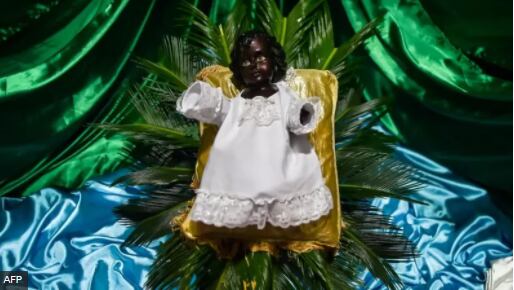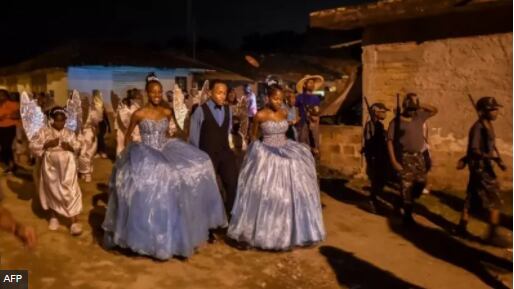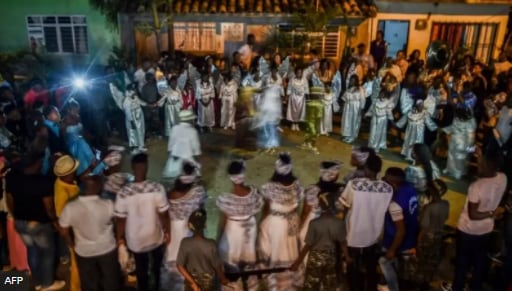The inhabitants of the town of Quinamayó, department of Valle del Cauca, on the Pacific coast of Colombia, celebrate Christmas in February with a procession that includes a doll of a black Child God.
Afro-descendant locals say the tradition dates back to the days of slavery, when their ancestors were prohibited from commemorating Christmas on December 24.
- The subtle universal symbol that unites Jesus, Buddha and Apollo
- The hero boy who at the age of 11 saved two people in the same day in the United States
- The “last Soviet citizen”: Sergei Krikalev, the cosmonaut left in space while the Soviet Union collapsed
They chose a date in mid-February – the third Saturday of the month – a tradition that has been preserved ever since.
The celebrations are carried out with theatricality, costumes of colorful, fireworks, music and dance.
“The people who enslaved us celebrated in December and we were not allowed to have that day off, but they told us to choose another,” said the event coordinator Holmes Larrahondo.
“In our community we believe that a woman should fast for 45 days after giving birth, so we celebrate Christmas not in December but in February, so that Maria can dance with us,” added Larrahondo.
Balmores Viáfara, a 54-year-old teacher, told the newspaper El Colombiano that, as a result, December 24 for him is “like any other day“While the Adorations of the Child God, as the celebrations are known, are” a party “in which” we blacks celebrate by worshiping our God, in our own way. “
They combine Catholic beliefs, the fruit of evangelization, with other forms of expression and ritual that the slaves brought from Africa.
Son “Celebrations of resistance”, highlighted Viáfara to El Colombiano.
As part of the celebrations, the locals go from house to house in a pilgrimage “in search” of the Child God -which is represented by a wooden doll- singing and dancing.
Once the statue is found, it is carried in a procession throughout the town by participants of all ages dressed as angels and soldiers, who finally place it in the manger.
Dancers perform a dance called the fugue, in which the dragged steps of chained slaves are imitated.
The festivities – which include recitations known as loas, dancing and drinking – continue until the wee hours of the morning.
During the rest of the year, the doll of the Child God is in custody in the house of one of the villagers.
That responsibility falls on Mirna Rodríguez, a 55-year-old midwife, who inherited the task from her deceased mother of keeping the doll in perfect condition.
“We children use them in the event since they are small. The angels, the soldiers, the godmothers, the godfathers, they are all children, so I think the tradition will never end, ”Rodríguez told El Colombiano newspaper.
All images are copyright
__________________________
- The day that ‘El Chapo’ Guzmán left a city without roses to bury his son
- Mexico will require a visa from Venezuelans to prevent them from reaching the United States
- The murdered actress Tania Mendoza and her love for the Mexican drug lord Arturo Beltrán Leyva
- “My husband cut off my hands with an ax”
- Tania Mendoza, actress of “La mera reina del sur” is shot to death in Mexico
.

:quality(75)/cloudfront-us-east-1.images.arcpublishing.com/elcomercio/ZO2Y5346XFGAVOABD4KKQ6T7NA.PNG)






:quality(75)/cloudfront-us-east-1.images.arcpublishing.com/elcomercio/WLZUL24PSJGHJK3POSTJBEWZFY.jpg)
:quality(75)/cloudfront-us-east-1.images.arcpublishing.com/elcomercio/QVI7XYY4LBBQNL4XMEVO2H5HJQ.jpg)
:quality(75)/cloudfront-us-east-1.images.arcpublishing.com/elcomercio/RDCTXNIL4BHZ3HGZXTM5Q5MBKM.jpg)
